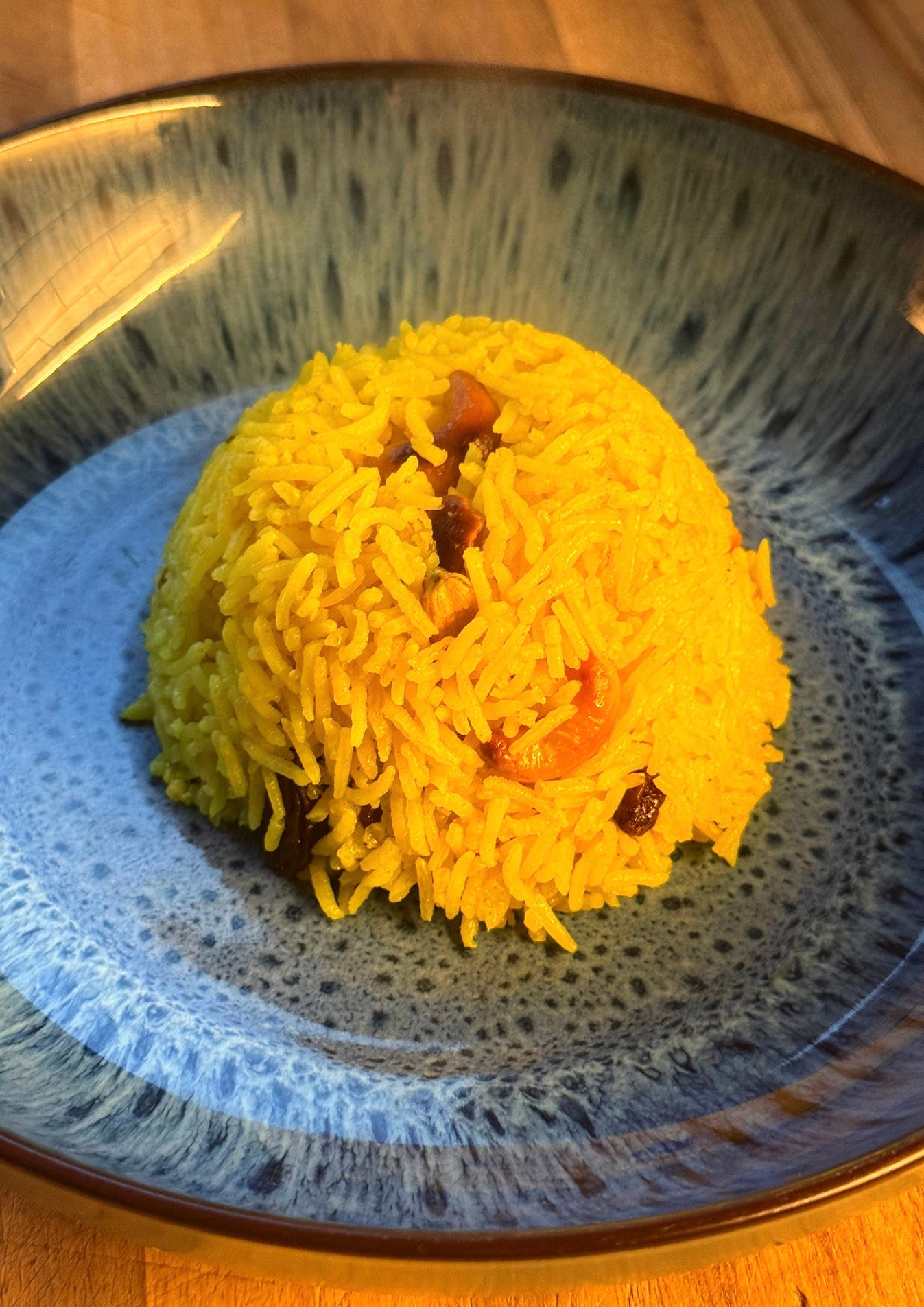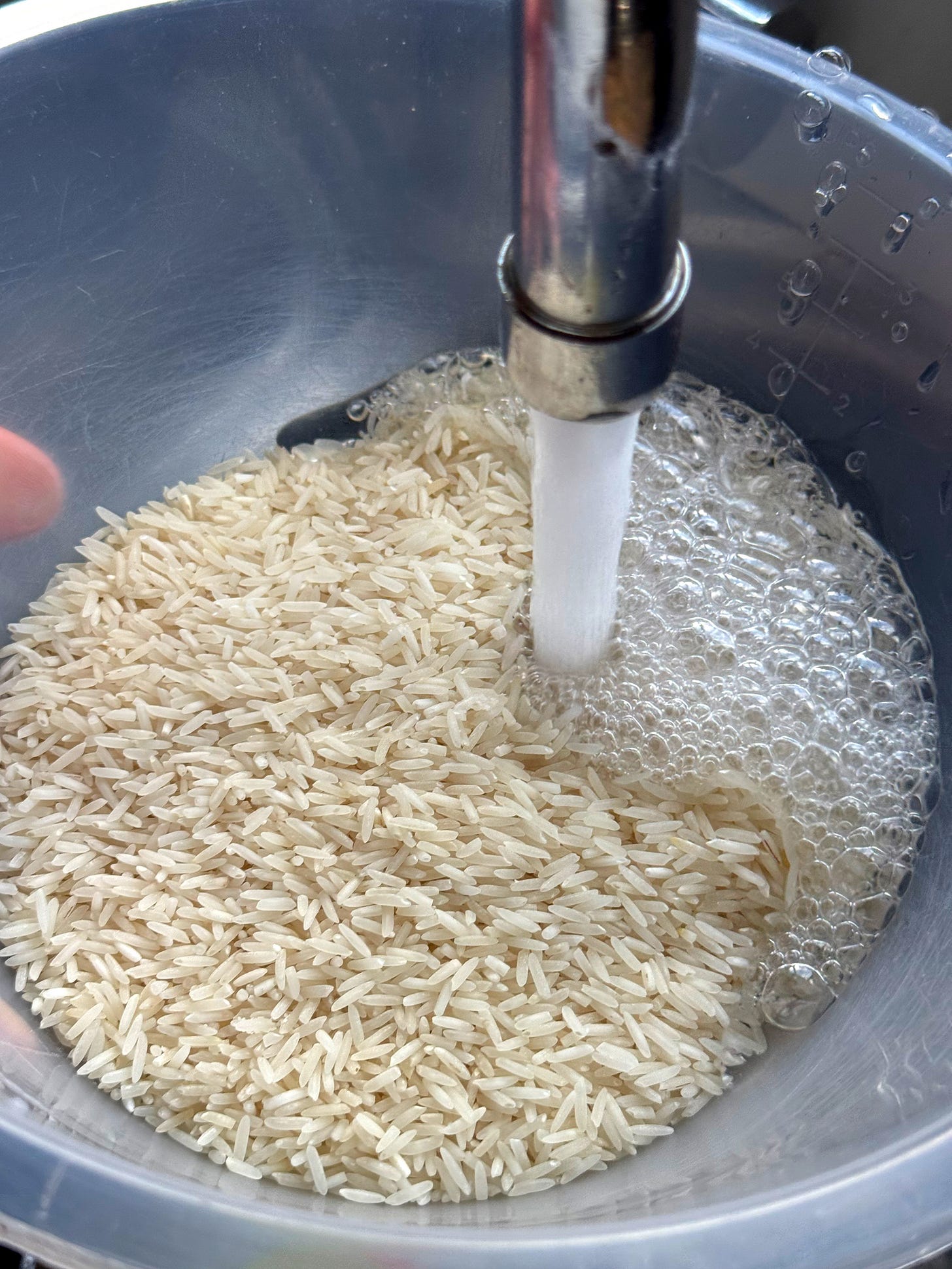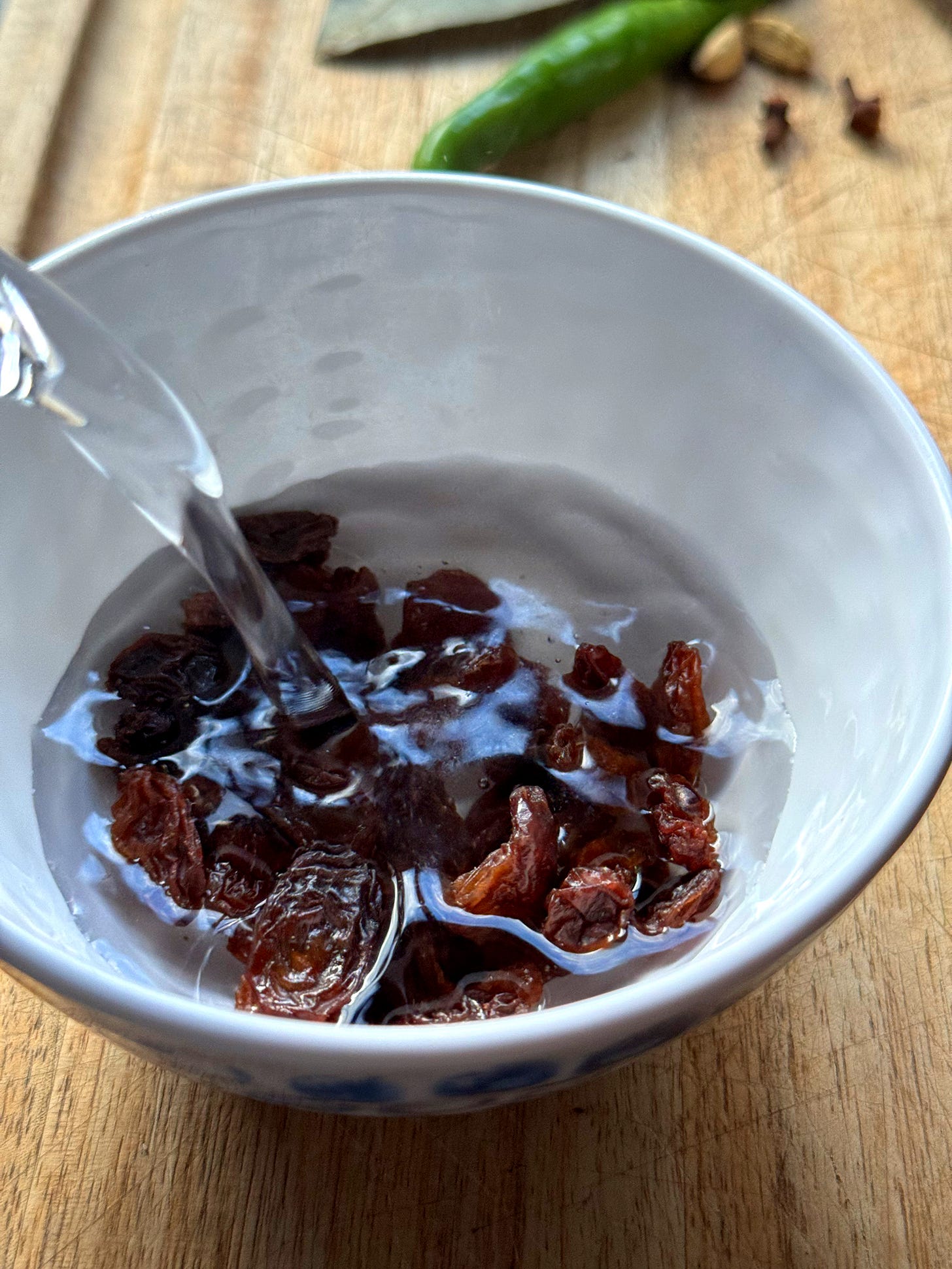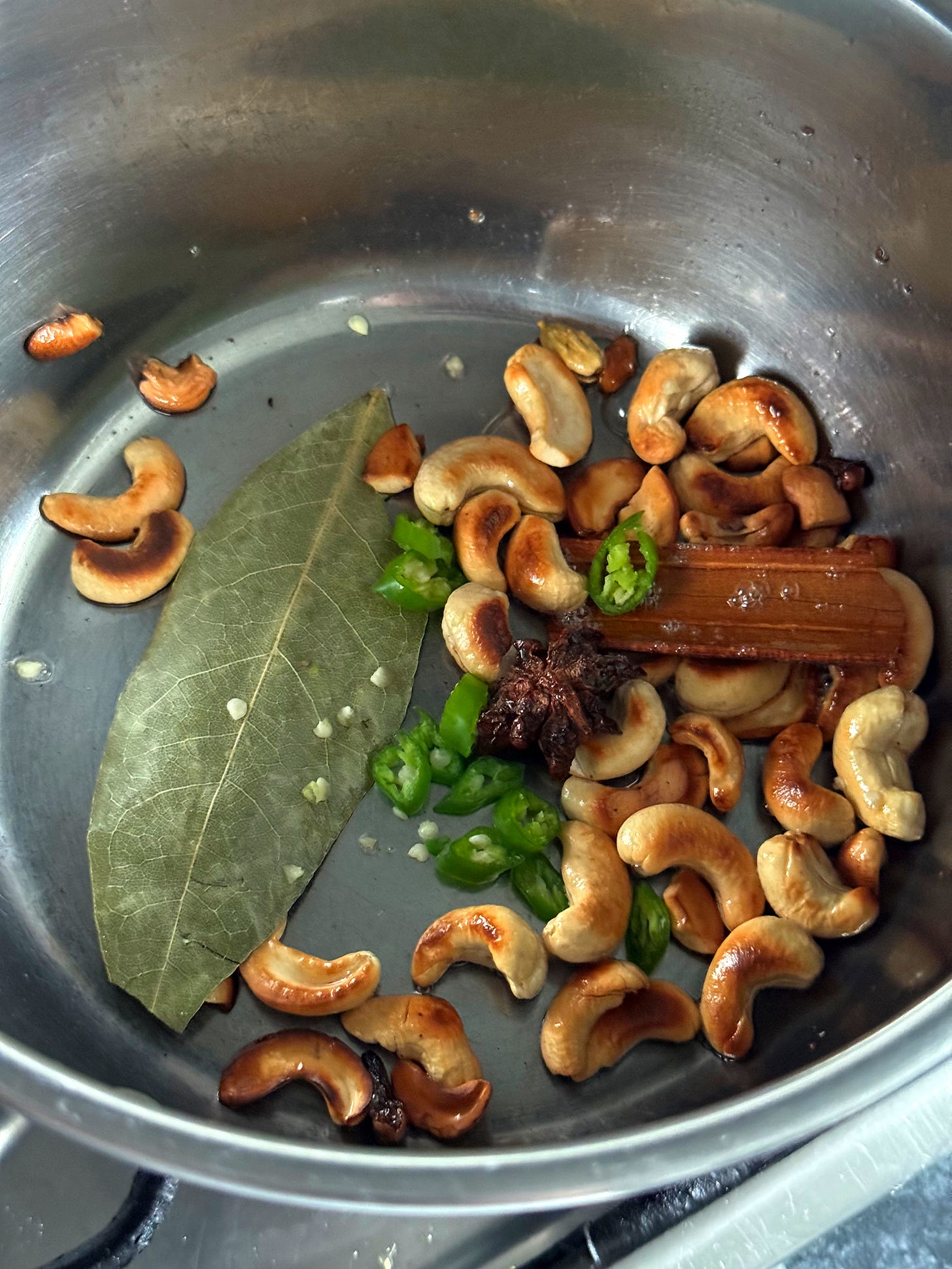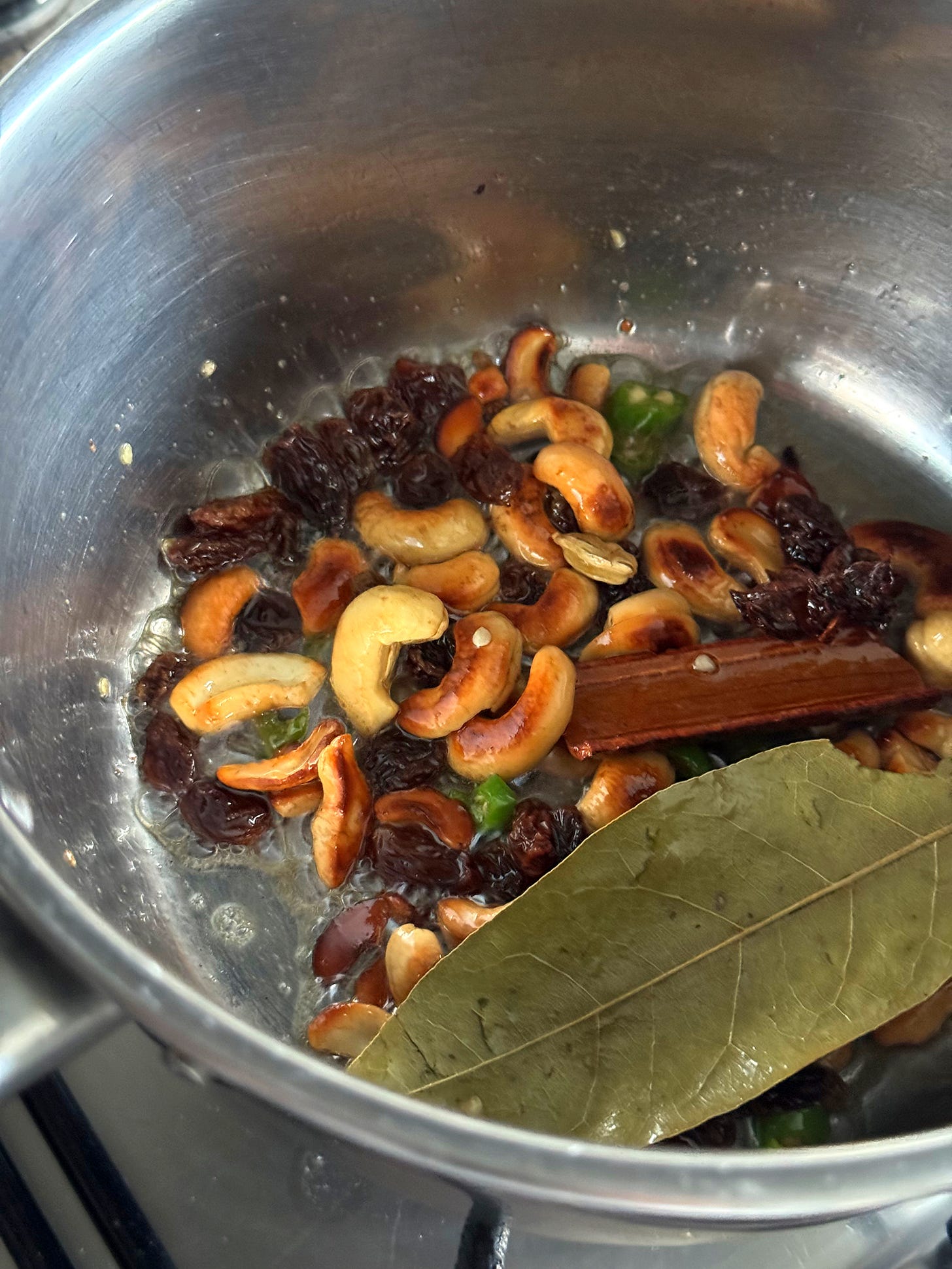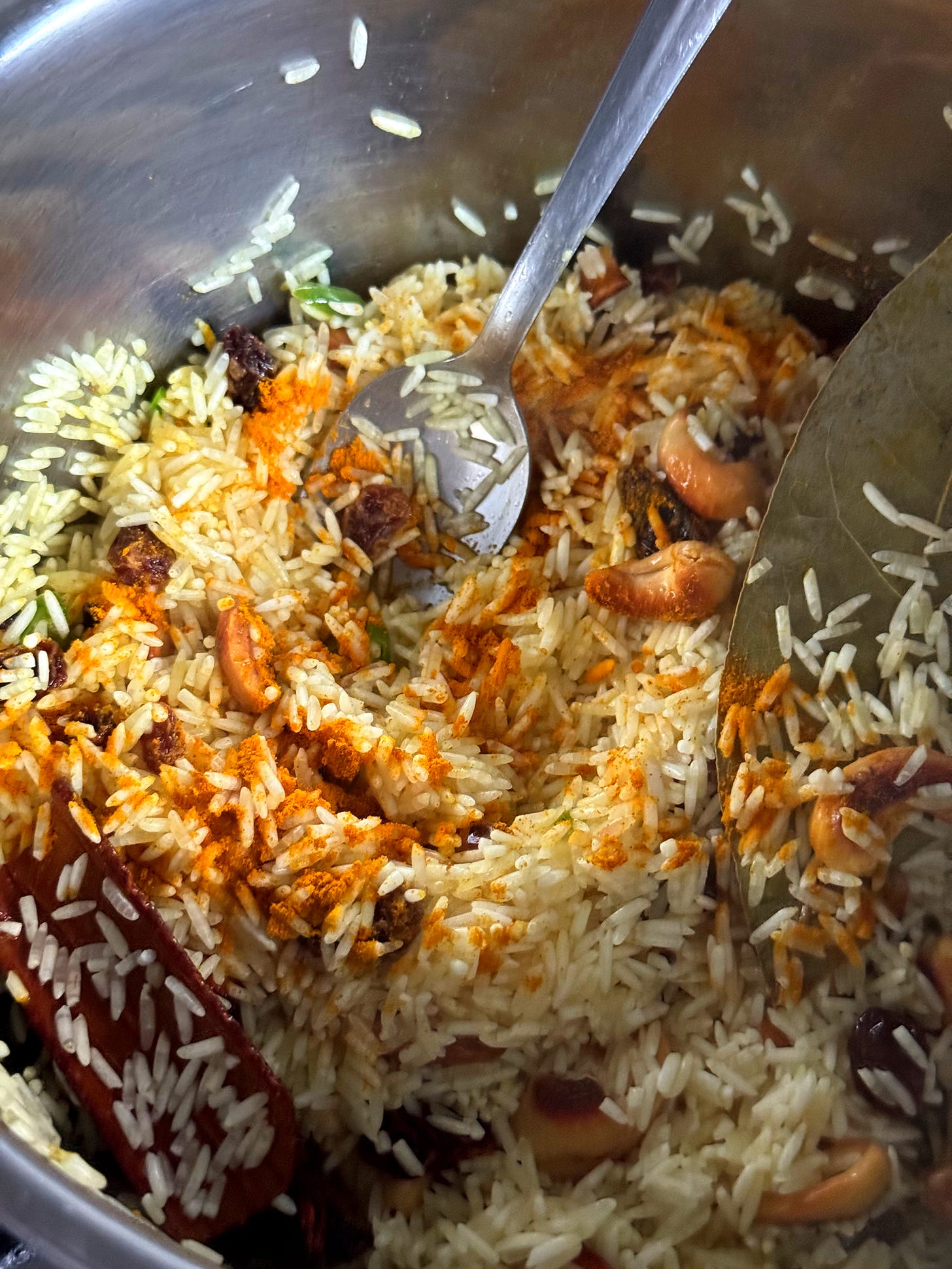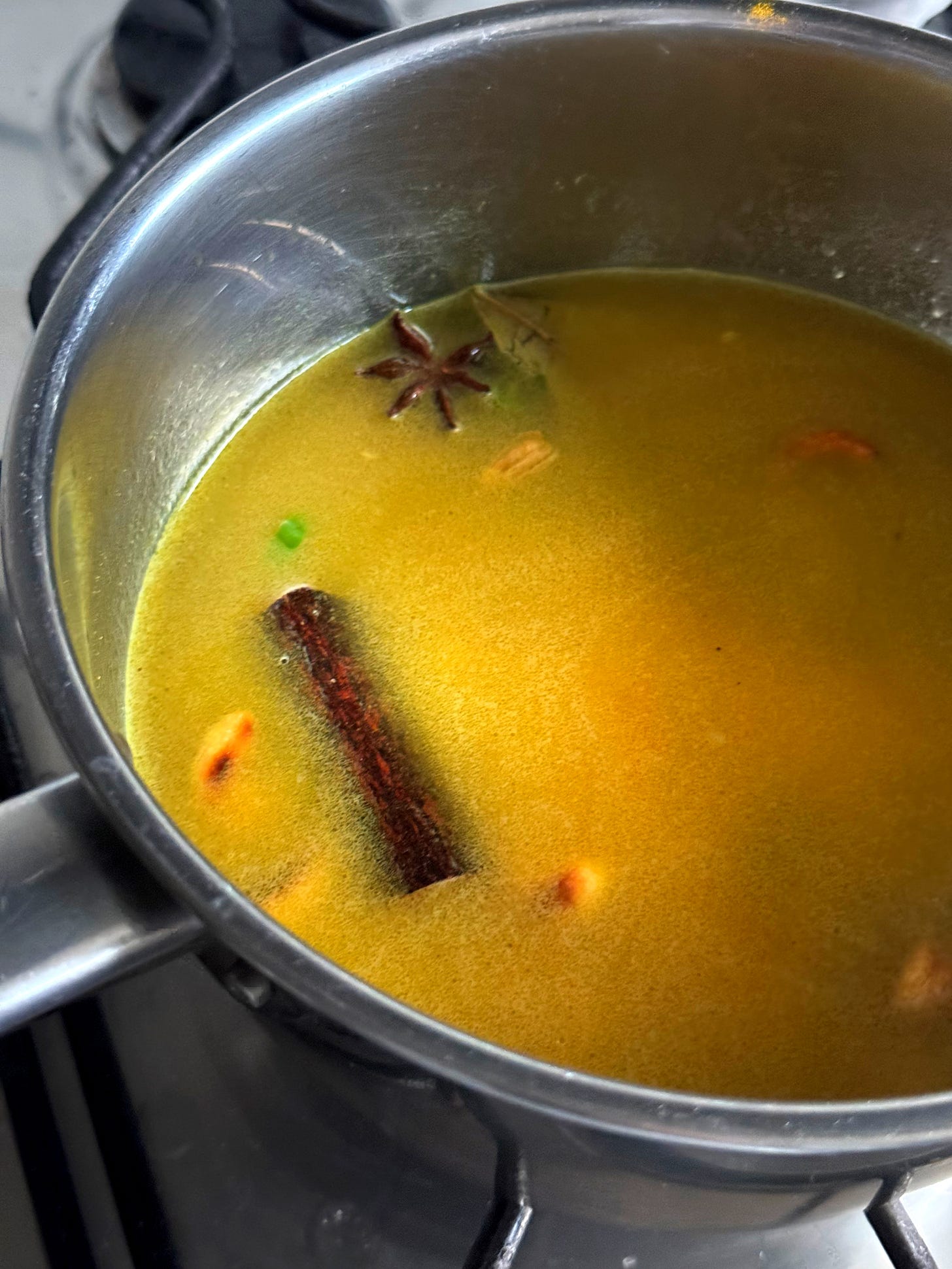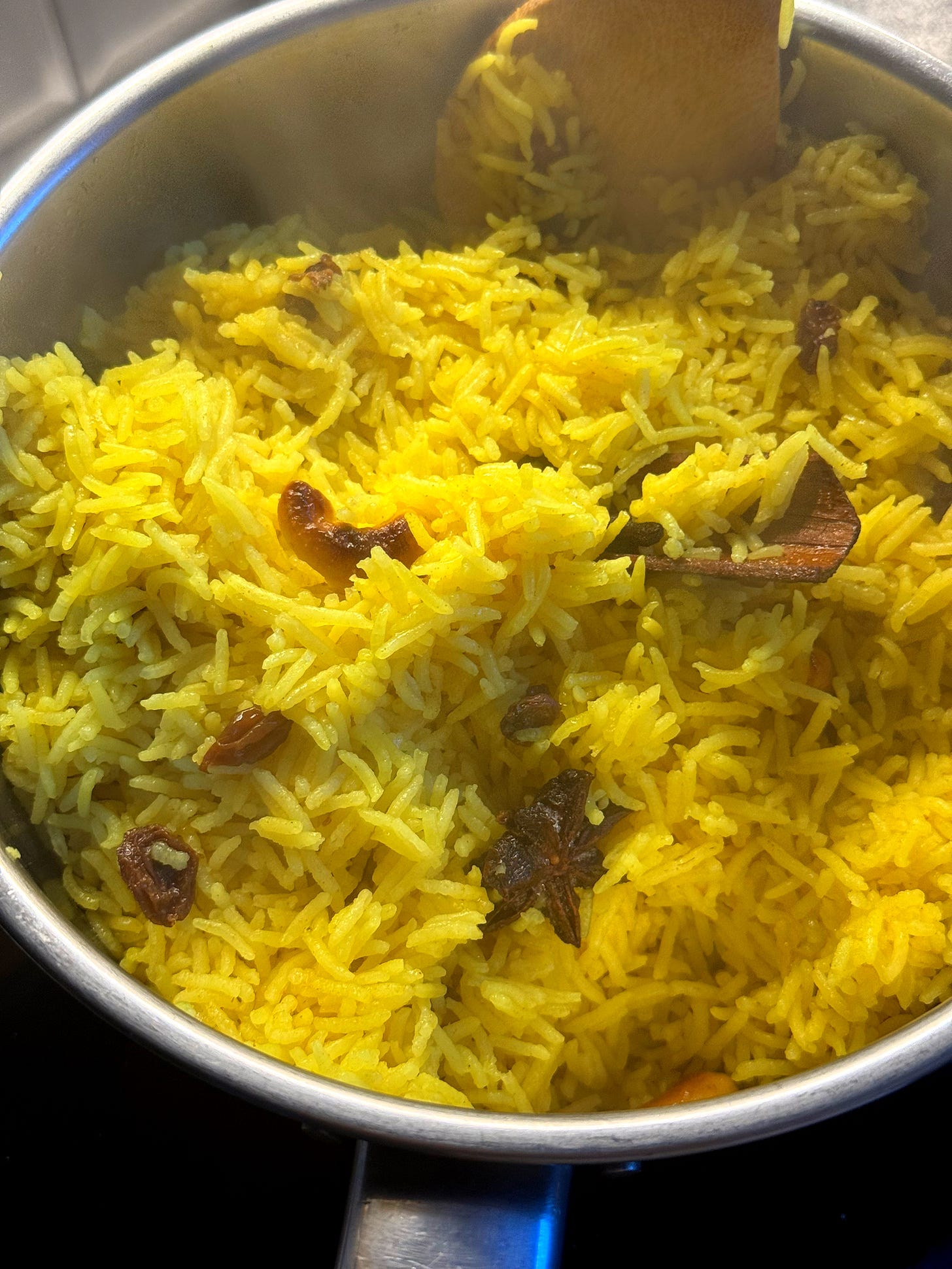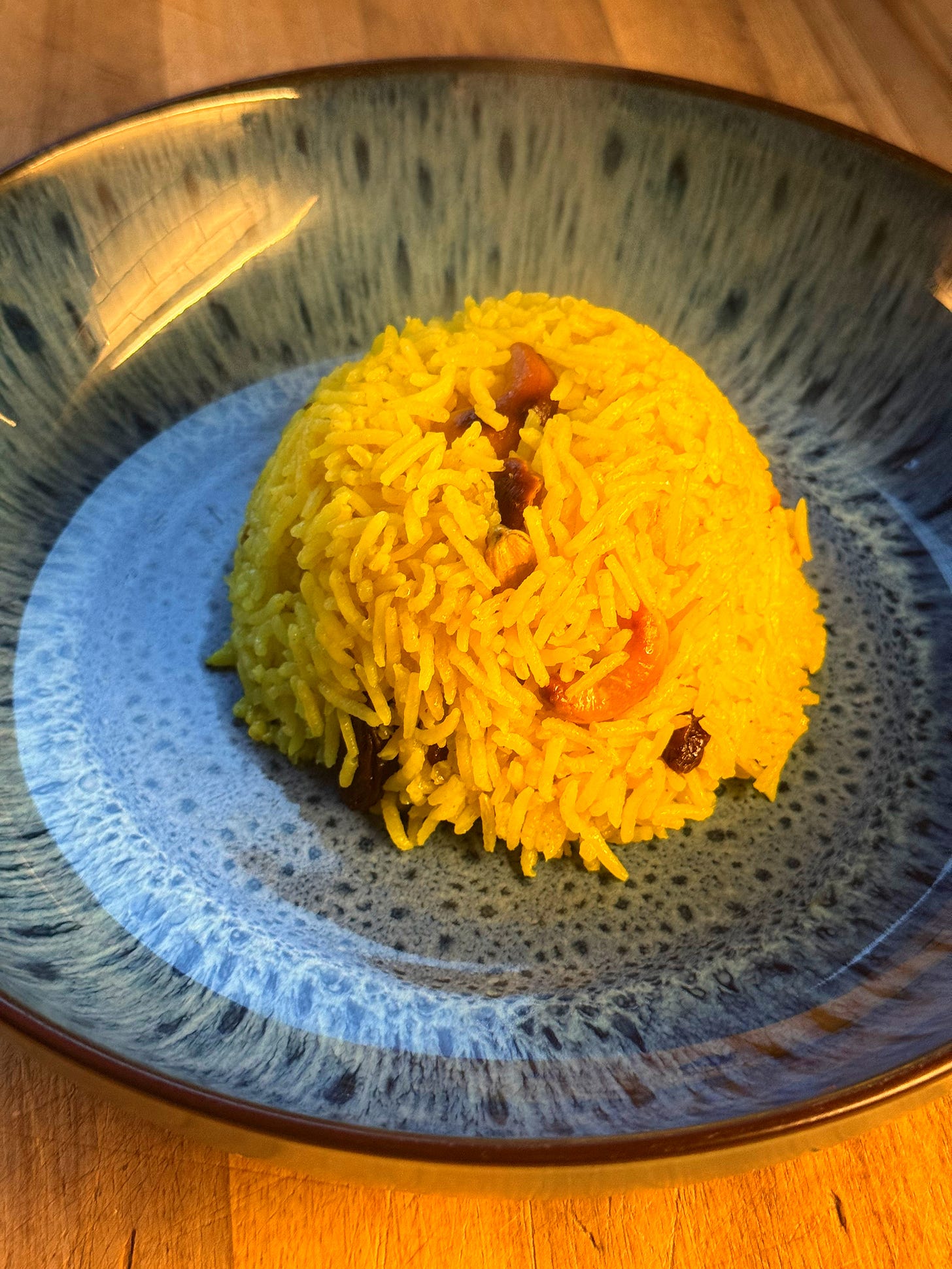Bengali Fruit & Nut Pilau (মিষ্টি পুলাও)
Known as 'mishti pulao', this Bengali-style rice pilau unites sweet and savoury with warm spices, buttery toasted nuts and dried fruit.
This Bengali style rice pilau has some unique features that set it apart from many versions of pilau or pilaf you will encounter throughout Asia and the Arab world. The main feature is specific rice: govindabhog rice. It’s a highly aromatic rice from the Bengal with a distinct flavour and pearl-like texture. It’s a wonderful item of produce, however it can be challenging to source. Running a cookery school for a few years, govindabhog rice was incredibly hard to source and was often quite expensive. Unfortunately a lot of batches I had sourced were in very poor condition and had lost their aroma, so I have engineered this recipe to use a basmati rice. The rice in this recipe is not fried in ghee as you would usually with govindabhog, as a delicate rice like basmati would simply overcook in the pilau. That being said, this is an excellent way to enjoy pilau in a Bengali spirit, studded with sweet, dried fruit and butter-toasted cashew nuts. I’ll walk you through it step-by-step. Don’t be spooked with the substantial addition of sugar to the finished rice, this is a testament to the sweet palate of Bengalis and it has to be tasted to be believed! It adds a sublime, glazing mouthfeel to the rice grains. It’s a wonderful rice dish served with many other dishes, but is honestly delicious all by itself. Let’s go!
INGREDIENTS (serves 2-4)
300g basmati rice
600ml water
2 tablespoons oil or ghee
1x bay leaf
1x star anise
1x cinnamon stick
6x cardamom pods
4x cloves
3 tablespoons cashew nuts
2 tablespoons raisins or sultanas
1x shallot, diced
2x cloves garlic, sliced
2cm piece of ginger, grated
1-2 green finger chillies, sliced
1 tsp turmeric
50g butter
2 tablespoons sugar
2 tsps salt
WALKTHROUGH
First, let’s wash and soak the rice. Rinse the 300g basmati rice in lukewarm water, agitating it gently until the water begins to run clear. Cover the rice with a few inches of water and set it aside to soak for at least 20 minutes. This will help the rice cook evenly.
Now we’ll soak the raisins. Place the 2 tablespoons of raisins into a bowl and cover with boiling water. Allow the raisins to soak for 5-10 minutes until slightly plump.
Now we’ll toast the whole spices. Place the saucepan in which you intend to cook the pilau onto a medium-low heat. Add 2 tablespoons of oil/ghee to the pan followed by the 1x bay leaf, 1x star anise, 1x cinnamon stick, 6x cloves cardamom, 4x cloves. Gently toast them until they are fragrant - about 2-3 minutes. Add the 3 tablespoons of cashew nuts and toast them along with the spices until lightly bronzed - 1-2 minutes.
Now we’ll add the aromatics. Add the diced shallot, sliced garlic, grated ginger and sliced green finger chilli. Fry for 1 minute until softened.
Add the 50g piece of butter and the soaked raisins from earlier and stir until the spice mixture, warming them through until the butter has melted.
Add the drained, soaked rice along with 1 tsp of ground turmeric. Stir the rice gently into the spices until the rice is coated in a slick of oil/ghee.
Cover the rice with 600ml of cold water and gently swirl the pan to distribute the water evenly. Increase the heat to high and place a tight-lid on the saucepan. Once the pan begins to boil and shake, turn the heat down to the lowest setting and simmer for 6 minutes. After the 6 minutes, turn off the heat completely and leave the pan on the hob for a further 6 minutes.
Now we’ll add the seasonings. Add 2 tablespoons of sugar and 2 tsps of salt. Using a fork, gently lift and fluff the seasonings through the rice. Add a few spoonfuls of melted butter or ghee if you prefer.
Serve the pilau with a variety of dishes, from vegetables to meat. Enjoy!



